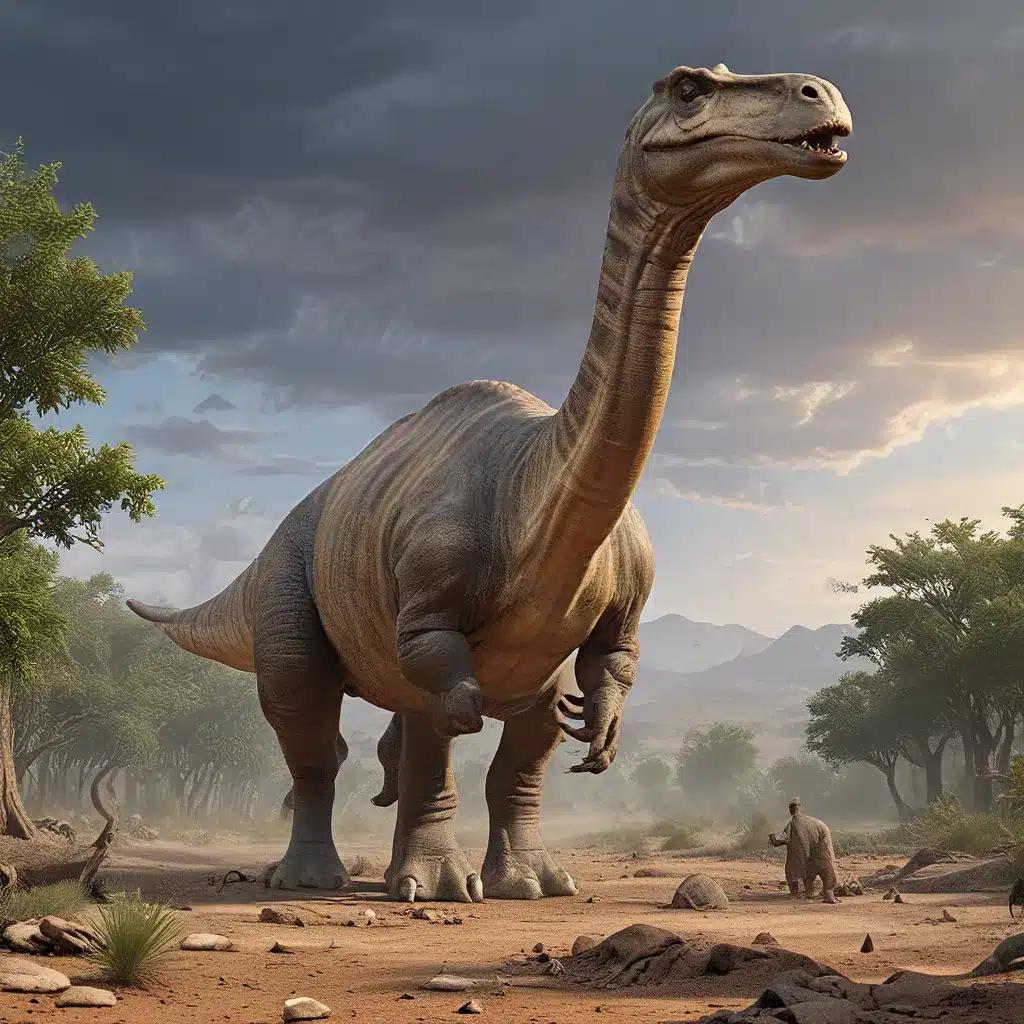
In the vast annals of paleontology, few dinosaur species have captured the imaginations of the public as forcefully as the Brontosaurus. This titanic sauropod, once thought to be a distinct genus, has weathered a fascinating history of scientific reclassification, controversy, and rediscovery. As we delve into the Jurassic past, unraveling the Brontosaurus mystery, we uncover a tale that transcends the mere bones and fossils, revealing profound insights into the evolving nature of scientific understanding and the relentless human drive to uncover the truth about our ancient world.
The Rise and Fall of the Brontosaurus
The story of the Brontosaurus begins in the late 19th century, when paleontologist Othniel Charles Marsh unearthed a nearly complete dinosaur skeleton in the Rockies of Colorado. Excited by his discovery, Marsh quickly named the new species Brontosaurus, derived from the Greek words for “thunder lizard.” This massive plant-eater, with its long neck, sturdy legs, and imposing size, captured the public’s imagination, becoming an icon of the Jurassic era.
However, the triumph of the Brontosaurus was short-lived. In the early 20th century, further analysis by Elmer Riggs revealed that Marsh’s specimen was, in fact, a juvenile Apatosaurus, a closely related sauropod genus. Riggs argued that the differences between the two species were not significant enough to warrant separate classifications, and the Brontosaurus was subsequently relegated to a mere synonym of Apatosaurus.
The Brontosaurus Controversy
The downfall of the Brontosaurus sparked a heated debate within the scientific community. While some paleontologists accepted the reclassification, others staunchly defended the Brontosaurus as a distinct and valid genus. This divide was fueled by the strong emotional attachment the public had developed toward the “thunder lizard,” which had become a beloved icon in popular culture.
The controversy surrounding the Brontosaurus reached a fever pitch in the 1970s, when a group of researchers, led by John McIntosh, conducted a comprehensive review of sauropod fossils. Their findings supported Riggs’ original assessment, further solidifying the conclusion that Brontosaurus and Apatosaurus were indeed one and the same.
The Brontosaurus Resurrected
Despite the scientific consensus, the Brontosaurus refused to fade into obscurity. In the early 21st century, a team of researchers led by Emanuel Tschopp re-examined the skeletal differences between Brontosaurus and Apatosaurus, drawing on the wealth of new fossil discoveries and advancements in comparative anatomy.
Their meticulous analysis revealed that the two genera could, in fact, be distinguished based on subtle variations in their vertebrae, limb bones, and other skeletal features. In 2015, the researchers published their findings, formally resurrecting the Brontosaurus as a distinct genus, much to the delight of dinosaur enthusiasts worldwide.
The Significance of the Brontosaurus Saga
The story of the Brontosaurus serves as a powerful testament to the dynamic and ever-evolving nature of scientific knowledge. It highlights the importance of continuous re-evaluation, the incorporation of new evidence, and the willingness to challenge long-held assumptions in the pursuit of truth.
The Brontosaurus saga also underscores the complex relationship between science and public perception. The iconic status of the “thunder lizard” demonstrates how scientific discoveries can captivate the public imagination, shaping our collective understanding of the past. Conversely, the public’s emotional attachment to the Brontosaurus name and image influenced the scientific discourse, delaying the acceptance of the Apatosaurus reclassification for decades.
Lessons from the Brontosaurus
The journey of the Brontosaurus offers valuable lessons for both the scientific community and the general public. It reminds us that scientific knowledge is not static, but rather a dynamic process of inquiry, debate, and refinement. It encourages us to approach scientific findings with an open mind, recognizing that our understanding of the past may be revised as new evidence and perspectives emerge.
Moreover, the Brontosaurus story highlights the importance of effective science communication, where scientists must balance their commitment to rigorous research with the need to engage and inform the public. By acknowledging the emotional and cultural significance of their discoveries, scientists can foster a deeper appreciation for the evolving nature of scientific knowledge and the ongoing quest to uncover the mysteries of our Jurassic past.
As we continue to explore the rich fossil record and uncover new insights into the dinosaurs that once roamed the Earth, the saga of the Brontosaurus serves as a poignant reminder that the pursuit of truth is an ever-evolving endeavor, one that requires a delicate balance of scientific inquiry, public engagement, and a willingness to embrace the unexpected.
The Lost Kingdoms is dedicated to providing in-depth, engaging explorations of ancient civilizations and the latest archaeological discoveries. Through our comprehensive articles and expert analysis, we invite you to join us on a journey of discovery, where the past comes alive and the mysteries of our world unfold.


